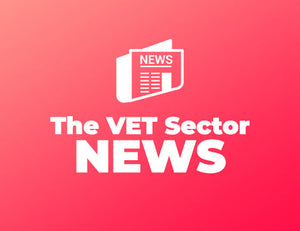
Accrediting your non-accredited learning
SUKH SANDHUThe process of becoming accredited might be of interest to you if you have acquired specific skills and knowledge in ways that are not typically considered acceptable for the purpose of providing academic credit. The process of converting non-accredited learning into accredited learning can be completed on your own or with the assistance of a career counsellor or academic advisor.
Getting your skills and knowledge accredited is a process that can help you to be recognised on a more formal level, which can help you to advance in your profession or further your education if you decide to pursue either of these options as a career path.
Non-accredited learning can be challenging to formalise, but there are a number of things that you can do to make sure that your skills and knowledge are appropriately acknowledged so that getting accreditation is easy and hassle-free.
In order to continue with the steps you can take to accredit your non-accredited learning, it is important to understand the difference between accredited and non-accredited learning:
Accredited learning
There is one important difference between accredited training and non-accredited training, and that is the fact that when a person completes an accredited training course, they will receive a nationally recognised qualification as a result of completing that course.
It can be assured that accredited learning activities have been reviewed in accordance with a strict set of criteria to ensure they are of high quality, unbiased, and clearly identify the learning objectives for participants. It is important to note that accredited programs specify the number of hours studied and the accrediting body responsible for the accreditation.
There are a number of accredited, nationally recognised qualifications that are recognised throughout Australia and are taught to the same standard. The Australian Skills Quality Authority (ASQA) is one body that accredits the national training programs recognised by the government.
The accredited training product, such as a qualification listed on your resume will provide employers with assurance that it is a quality-assured qualification and that it meets the requirements set out on the training register at www.training.gov.au. No matter where you are in Australia, an accredited qualification will be valuable (and recognised) anywhere in the country.
The accreditation of a course, in essence, is a formal confirmation that the course meets the following criteria:
- It is a nationally recognised qualification that meets the quality assurance requirements of the training package
- That it is fit for purpose;
- That it will lead to improved outcomes for learners; and
- That it is being delivered by suitably qualified staff.
- That the product meets the needs of an established industry, enterprise, educational institution, government agency, or community
- Ensures an appropriate level of competency outcomes and a satisfactory basis for assessing the candidate's performance
- When leading to a VET qualification, the program is aligned appropriately to the Australian Quality Framework (AQF).
Non-accredited learning
As opposed to accredited courses, non-accredited courses do not count towards the achievement of any recognised qualification. The goal of non-accredited courses is to provide you with relevant skills that will enable you to perform your job more effectively, in a shorter amount of time, in comparison to accredited courses.
Informal learning is one of the most common ways to accumulate non-accredited hours. In the case of self-study or on-the-job training, these hours are not accredited, and they are considered non-accredited hours.
It is also possible to get this type of training either as part of an employer's training program or as part of a community education program. The type of training that can be provided includes:
recreation courses; leadership courses; conflict resolution curses; customer service-related training programs; learning related to specific software programs and applications; enrichment courses for individuals; and bridging courses.
A non-accredited training course does not lead to a nationally or internationally recognised qualification as a result of the training. There is a great deal of research being conducted in this area aiming to better understand training outside of a formal qualification system and what role it plays.
The non-accredited learning offers a range of benefits in helping you to achieve your personal and career goals, including:
- Build on what you may already have acquired through an accredited course by acquiring more in-depth skills and knowledge on top of what you have already learned.
- Take advantage of industry advancements and keep up to date with the latest skills in order to meet the growing demands in your field.
- You can increase your earning potential by adding new skills and certifications to your resume in order to enhance your career prospects.
- Connect with other professionals in your field and create opportunities for networking.
- You can increase your career advancement prospects by building the skills needed for you to move into a new position that may be more fulfilling or have greater responsibilities as you develop the skills you need.
- Regardless of when you want to study, you can choose the time that works best for you.
You have a number of choices at your disposal for achieving this objective, and one of those choices is to enrol in a recognised program that will extend the knowledge and capabilities that you already have at your disposal. This is one of the options that you have available to you for achieving this objective. Because you already possess specific abilities and knowledge, the process will move along much more quickly than it otherwise would have if you did not have those skills and knowledge.
You also have the option of applying for recognition of prior learning, which is abbreviated as RPL. This option will be discussed more in the following section. This affords you the opportunity to have your current skills and knowledge evaluated in relation to an accredited training program or certificate program that is recognised in the industry.
You may also be able to get non-accredited learning recognised as valid for credit if you complete a portfolio evaluation and submit it as proof of your learning. This may be possible if you submit your portfolio as evidence of your learning. During this method, one of the needed tasks is to construct a portfolio of evidence that illustrates both your talents and your degree of competence. This portfolio should be presented to the person or organisation who is evaluating you.
If you want your previously unaccredited learning to be recognised as an acceptable educational experience, there are a few steps you need to take.
First, you'll need to get your learning accredited by an organisation that is recognised by the government or another relevant authority. You must submit evidence against each unit of competency to get your non-accredited learning recognised as valid for credit. Once your learning has been accredited, you can then apply to have it recognised as part of your formal education. Once you have gone through these steps, your non-accredited learning will be formally recognised and accepted as part of your overall educational experience.
RECENT POSTS





